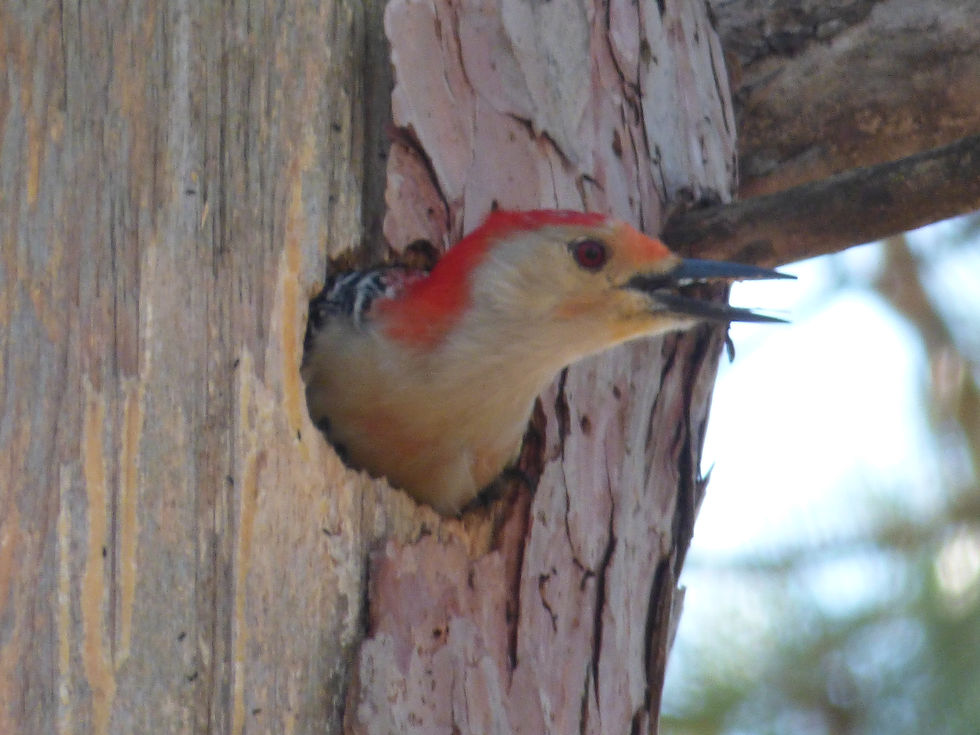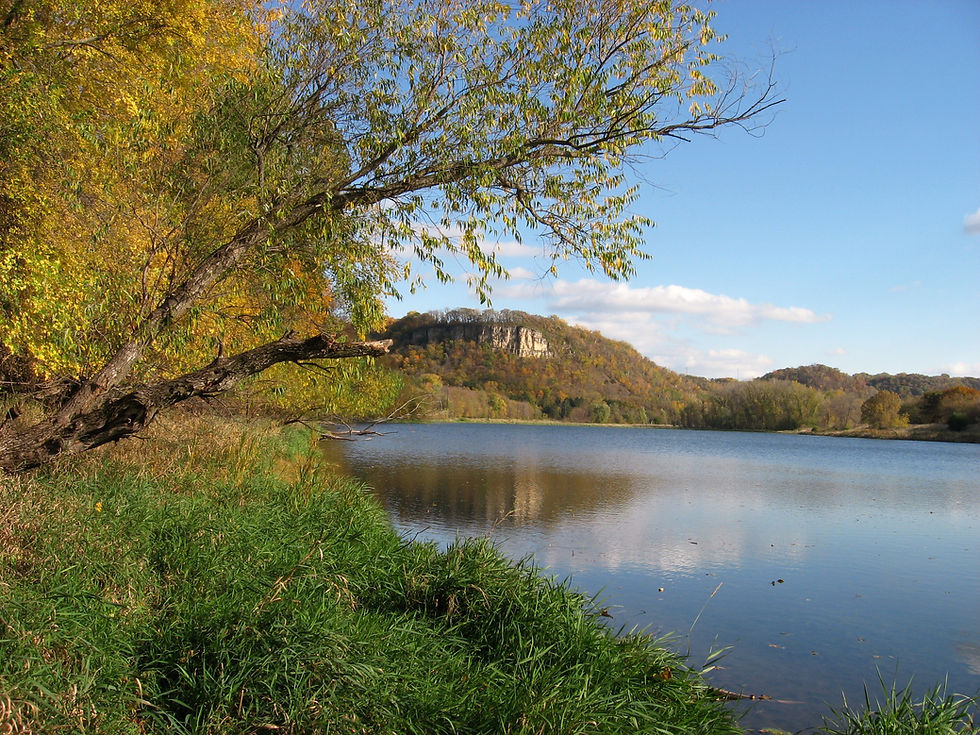Only in Minnesota
- wacoutanaturenotes
- Apr 14, 2020
- 3 min read

Downy Woodpeckers
Despite the fact that winter is still with us, it is beautiful outside this morning. Bright sunshine on all the snow covered trees and a lot of activity at our feeders.
Minnesota has a reputation for extreme swings in weather conditions. That was particularly true this past weekend with temperatures in the 50's on Saturday and 7 inches of snow on Easter Sunday. The wet snow brought numerous birds to our feeders including these four downy woodpeckers.

Male Bluebirds
There is a saying that "Spring doesn't arrive until the robin has three snows on it's tail." That certainly is true this year. I observed these two male bluebirds on March 27th checking out their territory for nesting options.
Males always arrive a week or two before the females. Given the fact, bluebird hatchlings are fed primarily insects, it can be problematic if the adults start nesting too early in the season. Because spring arrived so late in 2019, their first nesting was very unproductive.

Snow Trilliums
The first spring wildflowers I observed in Wacouta this spring were the delicate snow trilliums. These were photographed on April 3rd. They are typically found in a maple basswood forest.

Nesting Canada Goose
Directly across Highway 61 from Mount Frontenac is a very visible beaver lodge. If you look closely, you will see this Canada goose nesting on top. It has been there for a couple weeks.

Great Blue Heron
As of this writing, there hasn't been any Canada goose activity on the west end of Wacouta Pond adjacent to Wacouta Road. However on several occasions, I have observed this Great Blue Heron standing on a log searching for food. We heard wood frogs calling for the first time in our backyard pond on April 1st. Maybe the herons will find a few coming to life in this area?

Adult Beaver
In order to keep my mental condition positive under the current Covid-19 restrictions, I need to get out for a one or two hour hike most every morning. One morning with the river level at 13.5 feet, I was hiking at the edge of the floodplain forest surrounding Wacouta Bay when I happened upon an adult beaver sleeping on top of a floating log. No doubt this beaver had been flooded out of it's lodge.
Nearby was a large pile of logs that had evidently floated in and collected as a result of last year's very high spring flood. As I walked near these logs, I could hear the young beaver (kits) whimpering inside. No doubt mother beaver simple had to get away from the children for some downtime and relaxation.

Dead Scotch Pine
Fifty years ago when Kathy and I moved into our home in Wacouta, we planted a couple hundred tiny white spruce, Norway and Scotch pine seedings around the edge of our one acre lot. Those 12 inch high seedlings were purchased from the DNR for a penny each.
Today those Norway pine are healthy and reach a height of at least 50 feet. Unfortunately, the Scotch pine have a much shorter life span and are beginning to die. Rather than cut them down, I have decided to let them stand as woodpecker habitat. Without a doubt, the most common birds frequenting our feeders this winter were woodpeckers.

Red-Bellied Woodpecker
While walking along the Rattlesnake Bluff Trail near the town hall lately, I have observed considerable red-bellied woodpecker activity. Upon closer examination, I discovered their nesting cavity near the top of a dead Norway Pine.

Red-Bellied Woodpeckers
On April 4th, I observed a pair of woodpeckers tending the nest site. Can you determine which one is the female? In the days to come, I will be anxiously waiting to observe young nestlings sticking their heads out begging to be fed by the parents.




Female is on the left, I believe because the red does not come all the way down to its bill. Thanks for the Spring update from MN! Stay safe and sane and continue to hike! Best medicine in the world for this craziness. Marty & Dud
Always good to see your new post. While the snow was not exactly welcome, watching the woodpeckers, cardinals, gold finches and blue jays flock around the snow covered feeders was such a beautiful sight. It was delightful. Happy spring everyone. Stay in and stay healthy.
Thanks Bruce,
Awesome, as always. I do look forward to your bitesize nature notes.
—Dag